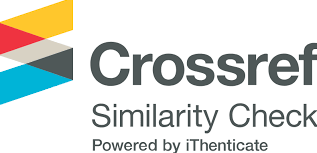Assessing coastal vulnerabilities to climate change impacts in Thai Thuy district, Thai Binh province
Keywords:
Adaptation, Climate change,, coastal areas, index, mitigation,, vulnerabilityAbstract
Based on coastal topographical features and natural conditions, 3 groups
of indices were selected to assess the coastal vulnerability, including
(i) topographical and geomorphological indices; (ii) ecological and
environmental indices; and (iii) socio-economic indices. As results
showed that the total length of coastal shorelines is 21.3km, including
15.2km coastline with low level of vulnerability; 3.2km with average level
of vulnerability; 2km high with level of vulnerability; and 0.8km of
coastline with a very high level of vulnerability. Areas with the greatest
vulnerability to climate change is the area of Thai Thuong commune,
where are adjacent to the Diem Diem town and Diem Ho river side. These
areas are identified with sparse vegetation and a high erosion, and
relatively weak coastal protection structures. In addition, the Diem Diem
town also is classified as the high degree of vulnerability, beca use the area
is known as highly populated areas with intensive business and trading
activities and with thin mangrove width. Moreover, the dykes in these
areas are being degraded gradually in where the adjacent estuary meets the
sea. Therefore, this area will be the highly vulnerable to climate change.
In contrast, Thuy Truong, Thuy Xuan and Thuy Hai have the lowest level
of vulnerability due to a large and thick mangrove width and relatively
uniform, large deposition rate, firm and safe dyke systems; and local
people are living far away from the sea dike these areas.
References
1. Hoàng Thị Hằng Nga, 2013. Sử dụng mô hình Mike 21 đánh giá quá trình lan truyền nhiệt vùng cửa sông Trà Lý dưới ảnh hưởng của nhà máy nhiệt điện Thái Bình 2. Trường Đại học Khoa học tự nhiên, Đại học Quốc gia Hà Nội.
2. Nguyễn Minh Thảo, 2013. Nghiên cứu ảnh hưởng của biến đổi khí hậu đến nuôi trồng thủy sản huyện Thái Thụy tỉnh Thái Bình và đề xuất các giải pháp để phát triển. Trường Đại học Khoa học tự nhiên, Đại học Quốc gia Hà Nội.
3. Cục thống kê tỉnh Thái Bình, 2011. Niên giám thống kê tỉnh Thái Bình năm 2011, NXB Thống kê Hà Nội.
4. Abdou Khouakhi, Snoussi, Saida Niazi and Otmane Raji, 2013. Vulnerability assessment of Al Hoceima bay(Moroccan Mediterranean coast): a coastal management tool to reduce potential impacts of sea -level rise and storm surges.
5. E. Robert Thieler and Erika S. Hammar-Klose, 2000. National Assessment of Coastal Vulnerability to SeaLevel Rise: Preliminary Results for the U.S. Pacific Coast.
6. Gulizar Ozyurt and Aysen Ergin, 2010. Improving Coastal Vulnerability Assessments to Sea-Level Rise: A New Indicator-Based Methodology for Decision Makers
7. Pamela A. O. Abuodha and Colin D. Woodroffe, 2010. Assessing vulnerability to sea-level rise using a coastal sensitivity index: a case study from Southeast Australia.
8. Paulo H.G.O. Sousa, Eduardo Siegle and Moysés Gonsalez Tessler, 2012. Vulnerability assessment of Massaguaçú Beach (SE Brazil)








